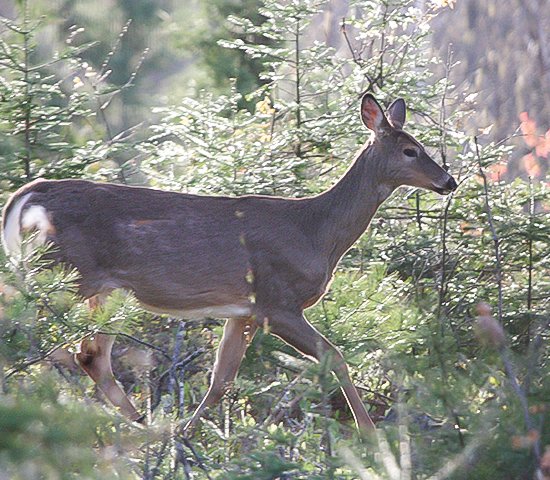Support the Timberjay by making a donation.
Deer hunters will find good access, below-goal numbers
REGIONAL—Nearly half a million firearms deer hunters are preparing for the firearms deer season that opens Saturday, Nov. 6, and offers opportunity to spend time outdoors with friends and …
This item is available in full to subscribers.
Attention subscribers
To continue reading, you will need to either log in to your subscriber account, or purchase a new subscription.
If you are a current print subscriber, you can set up a free website account and connect your subscription to it by clicking here.
If you are a digital subscriber with an active, online-only subscription then you already have an account here. Just reset your password if you've not yet logged in to your account on this new site.
Otherwise, click here to view your options for subscribing.
Please log in to continue |
Deer hunters will find good access, below-goal numbers
REGIONAL—Nearly half a million firearms deer hunters are preparing for the firearms deer season that opens Saturday, Nov. 6, and offers opportunity to spend time outdoors with friends and family, find adventure, and put venison in the freezer.
Hunters help keep deer numbers in line with population goals across the state and deer hunting is the primary tool used to manage deer populations. Managing deer populations contributes to the overall sustainability of Minnesota’s landscapes, natural systems and economy.
Minnesota Department of Natural Resources’ wildlife managers report favorable weather so far this year and good opportunities to harvest deer in most areas. Currently, managers report dry conditions that can improve hunter access due to low water conditions in wetlands, floodplains and small water bodies.
Hunters need to know the boundaries of the deer permit areas and any chronic wasting disease regulations that apply where they hunt. Detailed information about each permit area and CWD area can be found on the DNR’s interactive deer map. Additional information about CWD areas, carcass movement restrictions, and voluntary sampling can be found at mndnr.gov/cwd.
Northeast Minnesota outlook
The Arrowhead region is coming off a milder-than-usual winter in 2020-21, but that doesn’t mean that hunters should expect to see an abundance of deer in most locations, as most permit areas remain below goal.
Because white-tailed deer are adaptable and highly mobile, this year’s drought is not expected to negatively impact deer populations.
Drought conditions are expected to increase access opportunities in some areas like wetland, stream and lakeshore habitats, but in general, hunter access due to local surface water impacts is expected to be close to normal.
Every deer permit area is unique, with different mixes of deer habitat quality and land ownership. Permit areas also experience different levels of seasonal weather, predator pressures and deer survival, especially over winters, affecting local deer numbers and hunter success. In the northeast region, three interrelated factors have the most impact on the deer population: forest habitat quality, winter severity and predation.
Long-term trends in forest management have less impact on the deer herd when conditions are mild or normal because deer are able to move easily to find food and cover. During severe winters, thermal cover and forage availability become more important. Deer have more difficulty moving around and may become more susceptible to predation. Forest cover, food availability and predator numbers, as well as hunting pressure, vary across the landscape and can make a big difference on deer populations at a local level. Deer populations are typically higher on private land as opposed to public land.
Hunters are expected to encounter the most deer in areas of mixed habitat where there is a blend of forest and open fields of private land. Areas farther north with extensive public lands are still struggling to recover from past harsh winters. It’s important to acknowledge that the deer population recovery is typically faster in the south and southwestern part of the region, while recovery generally takes longer when moving to the north and northeast.
Bag limits will be conservative again this fall in most deer permit areas to give local deer populations the chance to grow more in areas where their numbers are still below the established, publicly vetted population goals. The DNR will be reviewing deer population goals for additional deer permit areas in the northeast region this winter.






